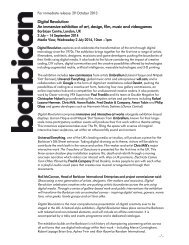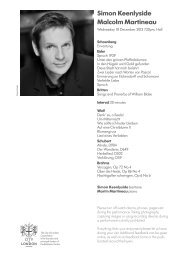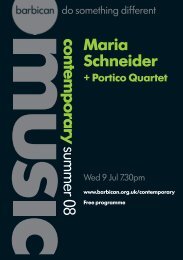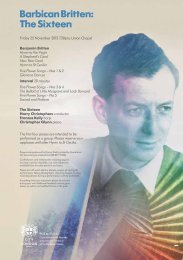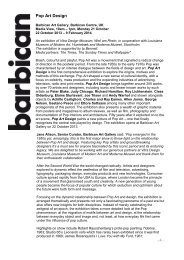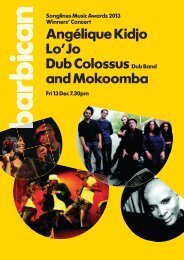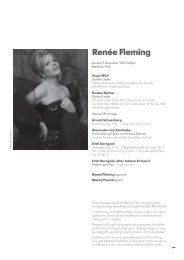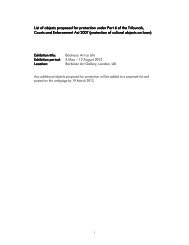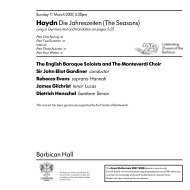Download your concert programme here - Barbican
Download your concert programme here - Barbican
Download your concert programme here - Barbican
You also want an ePaper? Increase the reach of your titles
YUMPU automatically turns print PDFs into web optimized ePapers that Google loves.
Wednesday 3 February<br />
attitude to musical motion. This is at its most striking in the<br />
moderately paced first movement, which poses all sorts of<br />
questions and t<strong>here</strong>fore offers conductors considerable<br />
latitude in interpretation. Is the very opening an<br />
accompaniment or a theme, for example? Is its basic pulse<br />
defined by the steadily throbbing crotchets or by their<br />
broader melodic ascent? As the music unfolds, w<strong>here</strong> are the<br />
main points of structural articulation, apart from the<br />
extremely characteristic theme (first heard on declamatory<br />
woodwind) beginning with a long held note and ending in<br />
a flurry of short ones? Leaving all these issues undecided,<br />
the music evolves in an improvisatory succession of moods,<br />
rarely emotional or dramatic on the surface, but all in a<br />
state of becoming and carried along as though by forces<br />
of nature.<br />
The two central movements are again remarkable for their<br />
economy of means and concealed structural energy. The<br />
dark-hued slow movement is built around an introspective<br />
melody for bassoons (marked ‘lugubriously’) and quiet,<br />
chorale-like phrases in the strings, those ideas being spaced<br />
by more of the accelerations that have already marked the<br />
first movement.<br />
The scherzo then contrasts a whirlwind of agitated stringwriting<br />
with a heartfelt trio section led off by the oboe;<br />
displaying a fine instinct for symphonic proportion, Sibelius<br />
curtails this trio, so that its recurrence after the repeat of the<br />
scherzo will not sound jaded. Even more effectively, this<br />
recurrence leads straight on to the finale rather than back to<br />
a final statement of the scherzo – in broad terms following<br />
the model of Beethoven’s Fifth Symphony. Now the<br />
redemptive tone promised by the quasi-religious ideas of the<br />
slow movement at last comes out into the open. And while the<br />
finale itself may be open to criticism for its relatively<br />
conventional imagery and structure, it is nothing if not bold in<br />
its attempt to measure up to Beethovenian (and other)<br />
precedents.<br />
Programme note © David Fanning<br />
7




